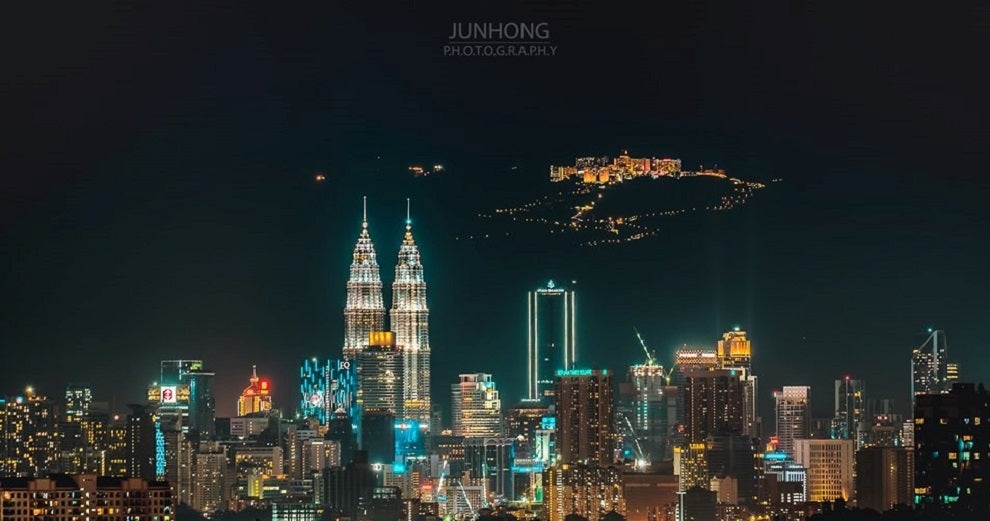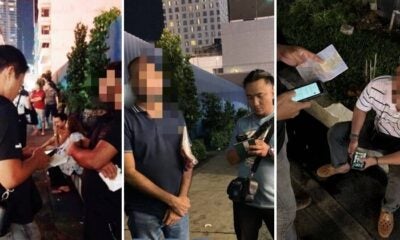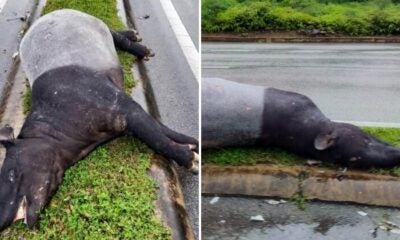Unless you’ve been living under a rock, you would surely remember this stunning shot of the Petronas Twin Towers with the sparkling lights of Genting glowing in the background. The photo quickly went viral and many Malaysians (us included) were left amazed by the photographer’s skill in capturing the never before seen shot.So, whether you’re just starting out in photography or simply looking to up your Instagram game, here are 5 night photography tips you should know to create a similar shot like this!
1. Understand the basics of camera settings
![[Test] Remember This Viral Shot of KL & Genting? Here Are 5 Night Photography Tips to Improve Your Skill! - WORLD OF BUZZ 1](https://worldofbuzz.com/wp-content/uploads/2019/07/test-remember-this-viral-shot-of-kl-genting-here-are-5-night-photography-tips-to-improve-your-skill-world-of-buzz-2.jpg)
Source: F stoppers
Here’s what you need to know:
- Shoot in manual mode so you have full control over all your camera’s settings — shutter speed, aperture, and ISO (a.k.a. the exposure triangle).
- Use the lowest ISO (your camera’s sensitivity to light) possible while keeping the appropriate shutter speed in mind to avoid grainy images. Typically, ISO 400, 800, or 1600 won’t produce too much grain/noise in your photos.
- You may need to use slow shutter speeds to ensure your images are properly exposed. Just be sure to set it up on a tripod first though to avoid getting blurry images!
If you’re unfamiliar with the fundamentals of the ‘exposure triangle’, click here for a more detailed explanation or check out this cheatsheet 😉
![[Test] Remember This Viral Shot of KL & Genting? Here Are 5 Night Photography Tips to Recreate It - WORLD OF BUZZ 3](https://worldofbuzz.com/wp-content/uploads/2019/07/test-remember-this-viral-shot-of-kl-genting-here-are-5-night-photography-tips-to-recreate-it-world-of-buzz-4.jpg)
Source: slrlounge.com
2. Use manual focus & experiment with long exposures
![[Test] Remember This Viral Shot of KL & Genting? Here Are 5 Night Photography Tips to Recreate It - WORLD OF BUZZ 8](https://worldofbuzz.com/wp-content/uploads/2019/08/test-remember-this-viral-shot-of-kl-genting-here-are-5-night-photography-tips-to-recreate-it-world-of-buzz-9.jpeg)
Source: jhong.visuals
![[Test] Remember This Viral Shot of KL & Genting? Here Are 5 Night Photography Tips to Recreate It - WORLD OF BUZZ 13](https://worldofbuzz.com/wp-content/uploads/2019/08/test-remember-this-viral-shot-of-kl-genting-here-are-5-night-photography-tips-to-recreate-it-world-of-buzz-14.jpg)
Source: jhong.visuals
Another great tip is to experiment with long exposure. Basically, long exposure photography involves opening up your camera’s shutter for longer periods of time (i.e. 1/15, 3, or even 15 seconds, for example). This works great when you’re trying to capture light trails or blur out water from a fountain so it has a smooth and silky look to it.
3. Keep experimenting with different angles and techniques
![[Test] Remember This Viral Shot of KL & Genting? Here Are 5 Night Photography Tips to Recreate It - WORLD OF BUZZ 10](https://worldofbuzz.com/wp-content/uploads/2019/08/test-remember-this-viral-shot-of-kl-genting-here-are-5-night-photography-tips-to-recreate-it-world-of-buzz-11.jpg)
Source: jhong.visuals
Here are some things you can do:
- Don’t stick to one angle! Shoot while close to the ground or standing from a raised platform. The trick is to always experiment and give a different feel to all your photos.
- Use the environment! Trees or maybe even pillars can be used as a great way to frame your subject.
- If there’s water in the foreground, use it to form a reflection of your subject. You can even use a mirror for this!
- If you have a drone, capture a bird’s-eye view of a familiar landmark or location.
![[Test] Remember This Viral Shot of KL & Genting? Here Are 5 Night Photography Tips to Recreate It - WORLD OF BUZZ 11](https://worldofbuzz.com/wp-content/uploads/2019/08/test-remember-this-viral-shot-of-kl-genting-here-are-5-night-photography-tips-to-recreate-it-world-of-buzz-12.jpeg)
Source: jhong.visuals
4. Don’t give up if you don’t get the shot you want the first time!
![[Test] Remember This Viral Shot of KL & Genting? Here Are 5 Night Photography Tips to Recreate It - WORLD OF BUZZ 12](https://worldofbuzz.com/wp-content/uploads/2019/08/test-remember-this-viral-shot-of-kl-genting-here-are-5-night-photography-tips-to-recreate-it-world-of-buzz-13.jpeg)
Source: jhong.visuals
FYI, it usually takes him multiple visits to a particular location to get the jaw-dropping shots you see on his Instagram page.
Here are some things to keep in mind:
- Shoot on a clear night when capturing landscapes.
- Shooting during a full moon isn’t ideal if you’re trying to capture the milky way as the moonlight will wash out the stars.
So be patient, okay!
5. Ensure you have the right gear
![[Test] Remember This Viral Shot of KL & Genting? Here Are 5 Night Photography Tips to Improve Your Skill! - WORLD OF BUZZ 4](https://worldofbuzz.com/wp-content/uploads/2019/07/test-remember-this-viral-shot-of-kl-genting-here-are-5-night-photography-tips-to-improve-your-skill-world-of-buzz-5.jpg)
Source: originalrowe
- A steady tripod to avoid camera shake resulting in blurry shots. Pick ones that are made of aluminium and feature a bald head that rotates 90 degrees for added versatility.
- A lens with a wide aperture.
- Don’t worry if you can’t afford expensive lenses though, the kit lens which usually comes with any camera is good enough to start!
- A remote shutter release, a nifty gadget that eliminates camera shake when physically pressing the shutter button. Some mirrorless cameras even have a dedicated app, allowing you to snap a picture with your phone!
It also goes without saying that a reliable camera with great low light performance will help too. Well, if you’re in the market for a new camera then why not consider getting a mirrorless camera?
What’s great about mirrorless cameras is that they’re lightweight and compact, making them easy to carry around like the Fujifilm X series cameras, for example. In an exclusive interview, Jun Hong shed some light on what made him make the switch from a DSLR:
According to Jun Hong, what he loves about his Fujifilm X series camera is its lightweight and small size factor. And although physically small and light, its image quality does not suffer from any sacrifices.
He also says that the 18-55mm kit lens which comes along with the camera is as good as the much more expensive standard zoom lens he used to use on his full-frame DSLR.
![[Test] Remember This Viral Shot of KL & Genting? Here Are 5 Night Photography Tips to Recreate It - WORLD OF BUZZ 6](https://worldofbuzz.com/wp-content/uploads/2019/08/test-remember-this-viral-shot-of-kl-genting-here-are-5-night-photography-tips-to-recreate-it-world-of-buzz-7.jpg)
Source: TrustedReviews
The Fujifilm X-T3 is the latest addition to the X series lineup featuring Fujifilm’s signature classic look, exceptional photo and video capabilities, and is highly touted as 2018’s APS-C camera to beat.
More information on the X-T3 can be found here.
![[Test] Remember This Viral Shot of KL & Genting? Here Are 5 Night Photography Tips to Recreate It - WORLD OF BUZZ 7](https://worldofbuzz.com/wp-content/uploads/2019/08/test-remember-this-viral-shot-of-kl-genting-here-are-5-night-photography-tips-to-recreate-it-world-of-buzz-8.jpg)
Source: TrustedReviews
And if you’re inspired by these photos then check out Jun Hong’s Instagram page to see more of his work!
What are some other night photography tips you have, share them with us in the comments below.
Happy snapping, fellow Malaysians!


































